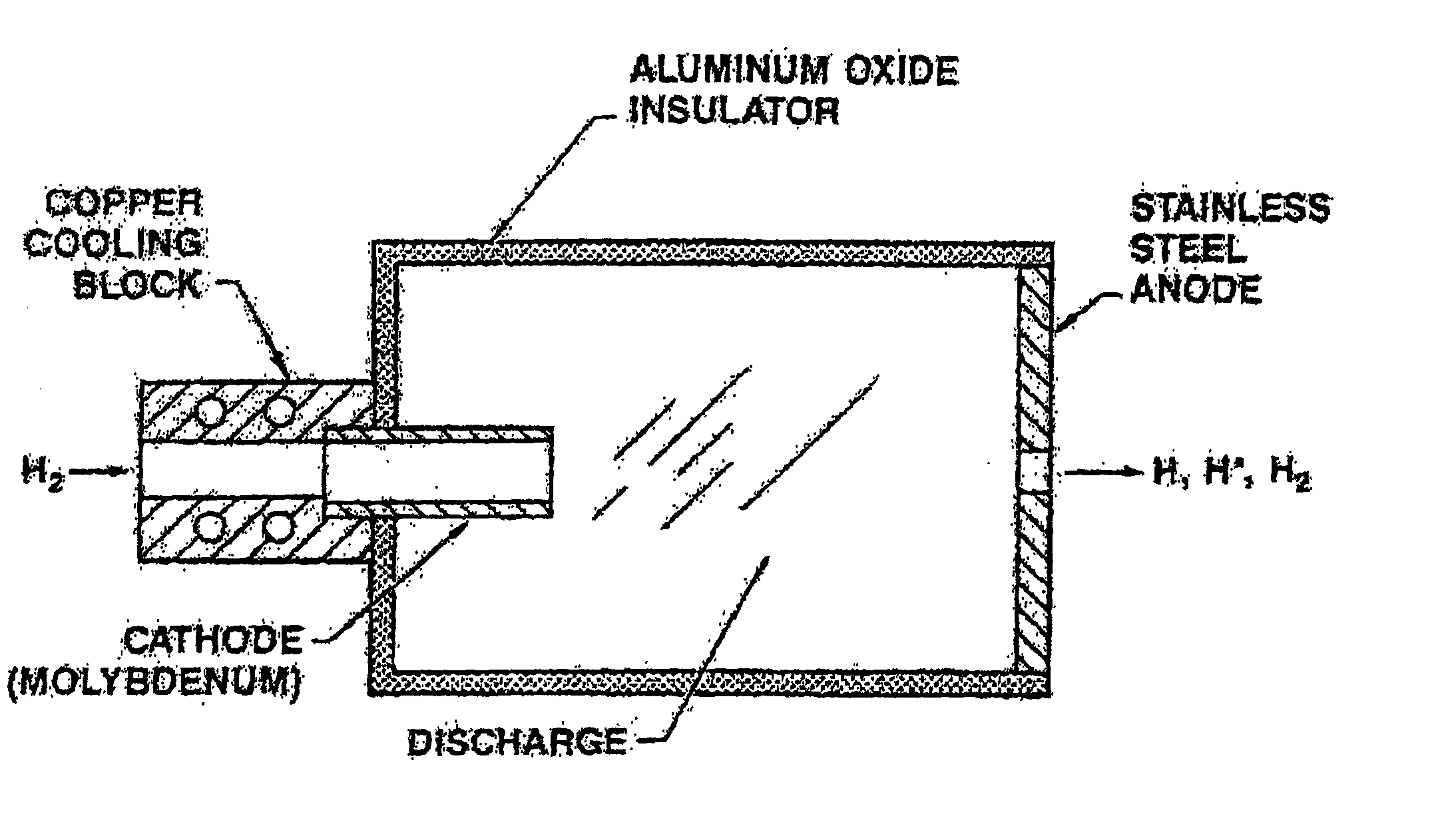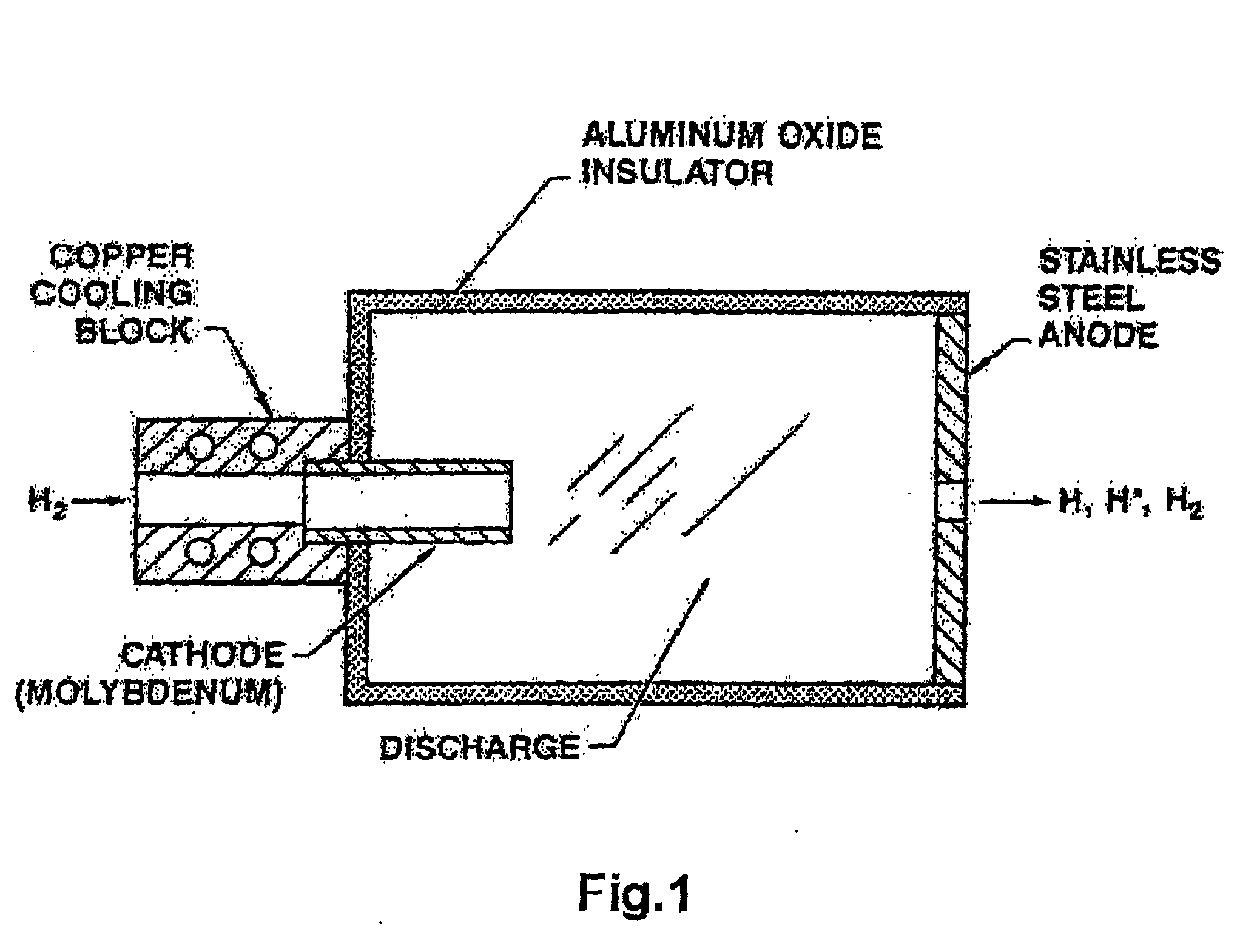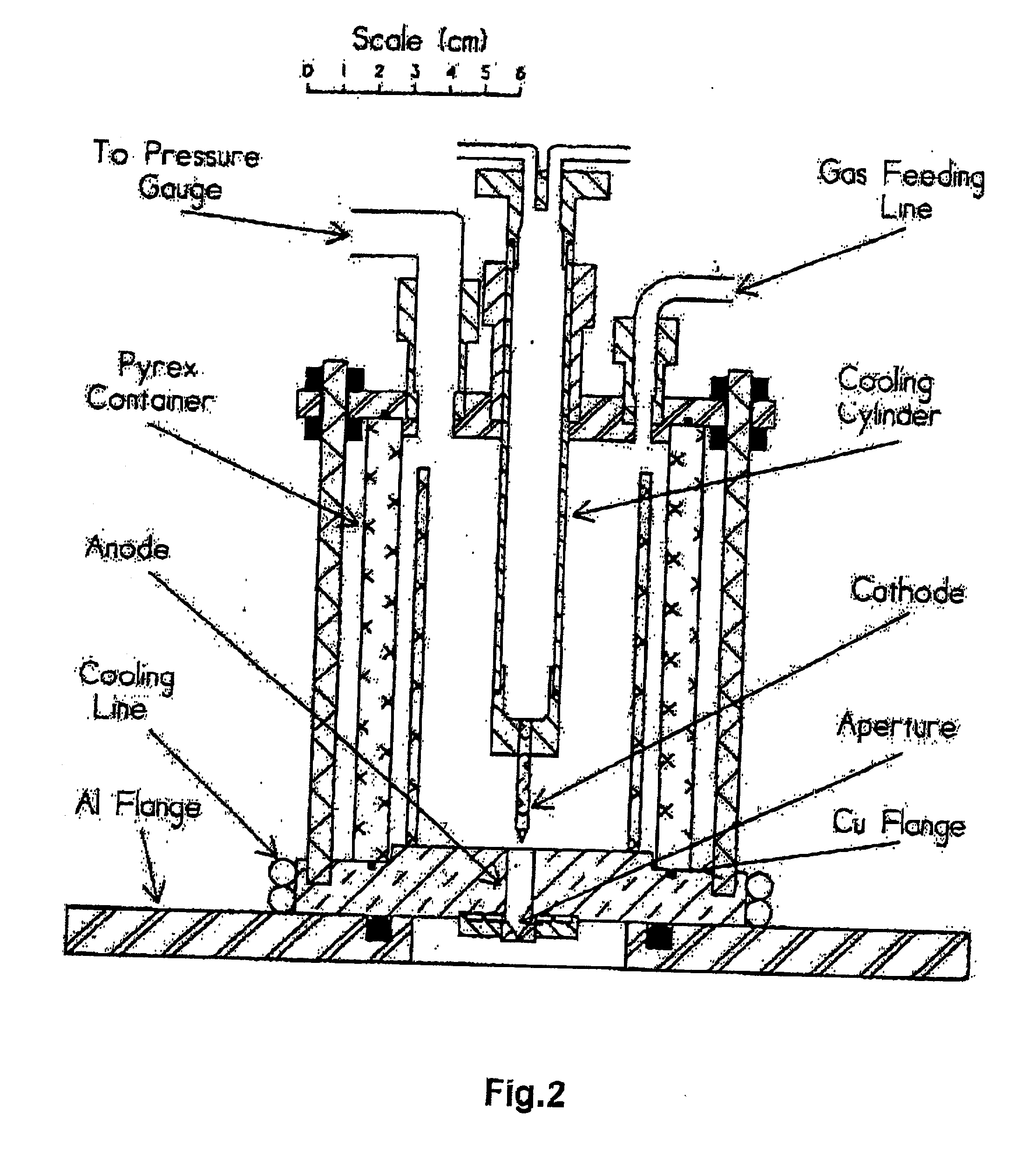Method and appratatus for producing atomic flows of molecular gases
a technology of molecular gases and atomic flows, which is applied in the direction of ion implantation coating, chemical vapor deposition coating, fuel cells, etc., can solve the problems of inability to obtain hot atoms, less developed sources of neutral chemically active particles, and limited effectiveness of such an atomic hydrogen sour
- Summary
- Abstract
- Description
- Claims
- Application Information
AI Technical Summary
Problems solved by technology
Method used
Image
Examples
example 2
[0124] The present example demonstrates the effect of increasing the atomic hydrogen output while utilizing transition from the source operation without a plasma jet to the operational mode with the plasma jet flowing through the emitting aperture into vacuum. An additional dissociation of hydrogen molecules occurring in the plasma jet, due to the oscillating electrons emitted from the butt-surface of the self-heating electrode and accelerated at the cathode potential drop, under a condition when the generated atoms are incapable of recombining on the cold walls of the cell, leads to a significant increase of the density of the atomic hydrogen flow.
[0125] The following table presents experimental data corresponding to the atomic hydrogen output for both operational modes, with and without the plasma jet. In these experiments the discharge cell of the above example of FIG. 5B, wherein the emitting aperture diameter is 0.5 mm, pressure in the vacuum chamber is 1.3.times.10.sup.-2 Pa. ...
example 3
[0127] The present example demonstrates the effect of decreasing the atomic hydrogen output by passing from the discharge cell operation mode with the second auxiliary discharge being a penning discharge (FIG. 5B) to its operational mode with the auxiliary discharge being a Penning discharge with hollow cathode. As can be seen from the experimental results presented in the table below, this change in the operational mode of the discharge cell results in the decrease of the atomic hydrogen output by a factor of 2.5.
3 Operational mode with Penning Operational mode with discharge with Penning discharge hollow cathode Discharge current, A 2.4 2 Discharge voltage, V 160 190 Power density entering the 384 380 discharge, W Output of atomic hydrogen, 4 1.6 arbitrary units
example 4
[0128] The present example demonstrates how the source of the present invention can be used for cleaning the surface Al.sub.0.6Ga.sub.0.4As. The cleaning procedure was carried out in the flow of atomic hydrogen within a system of vacuum deposition of thin metal films. The discharge current of the atomic hydrogen source was equal to 2A, and the voltage of discharge was 200V The pressure of the residual atmosphere in a vacuum chamber was about (4-10).times.10.sup.-5 Pa. The pressure of hydrogen during the cleaning process was maintained at a level of 10.sup.-2 Pa, the temperature of the samples treatment T was changed from 300 to 400C., and the treatment time t changed from 3 min to 90 min. Investigation of the surface cleaning used Auger electron-spectroscopy with layer-by-layer etching. To avoid the effects of oxidation of the sample' surfaces when they are transported into the chamber of Auger spectrometer, the samples were fed to the deposition zone immediately after being cleaned...
PUM
| Property | Measurement | Unit |
|---|---|---|
| Length | aaaaa | aaaaa |
| Length | aaaaa | aaaaa |
| Electric potential / voltage | aaaaa | aaaaa |
Abstract
Description
Claims
Application Information
 Login to View More
Login to View More - R&D
- Intellectual Property
- Life Sciences
- Materials
- Tech Scout
- Unparalleled Data Quality
- Higher Quality Content
- 60% Fewer Hallucinations
Browse by: Latest US Patents, China's latest patents, Technical Efficacy Thesaurus, Application Domain, Technology Topic, Popular Technical Reports.
© 2025 PatSnap. All rights reserved.Legal|Privacy policy|Modern Slavery Act Transparency Statement|Sitemap|About US| Contact US: help@patsnap.com



